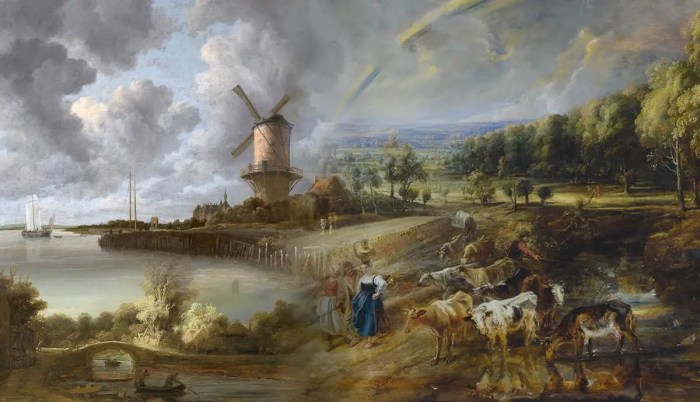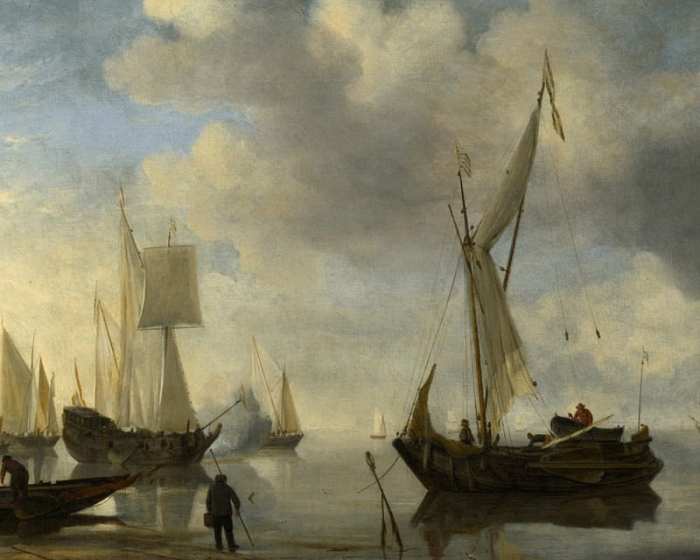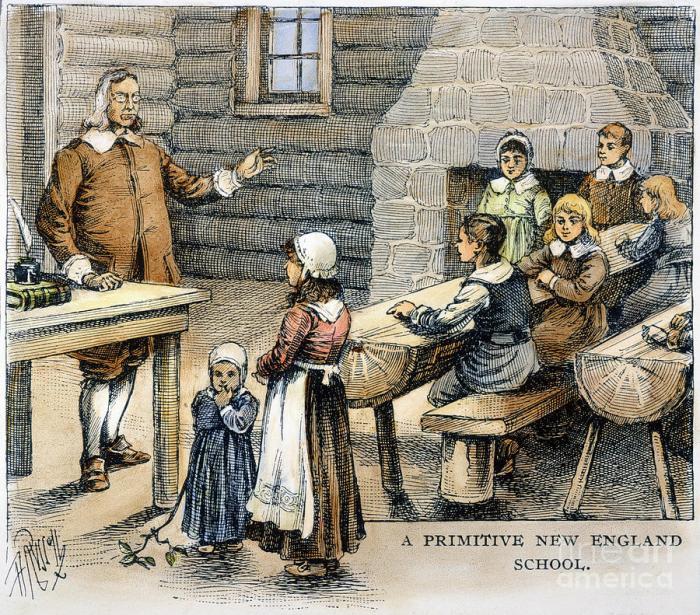One characteristic of beauty in many seventeenth-century landscape paintings is their idealized representation of nature. These landscapes often depicted idyllic scenes of pristine and harmonious nature, reflecting the desire for order and control in a rapidly changing world. They were also used to convey symbolic meanings, with specific elements representing abstract concepts.
Perspective and composition were carefully employed to create depth and realism, while light and atmosphere were used to evoke emotions and create dramatic effects. Human figures were often included to provide scale, narrative, or symbolic meaning.
Seventeenth-Century Landscape Paintings

Seventeenth-century landscape paintings were characterized by a fascination with the natural world and a desire to capture its beauty and order. These paintings often depicted idealized landscapes, used symbolism and allegory, and employed innovative techniques of perspective, composition, light, and atmosphere.
Idealized Landscapes
Seventeenth-century landscape paintings often portrayed nature as pristine and harmonious, reflecting a desire for order and control. These idealized landscapes depicted idyllic scenes with rolling hills, clear rivers, and lush vegetation, creating a sense of tranquility and peace.
Examples of idealized landscapes include:
- Claude Lorrain’s Landscape with a Flight into Egypt
- Nicolas Poussin’s The Landscape with Orpheus and Eurydice
- Salvator Rosa’s Landscape with Mercury and Argus
Symbolism and Allegory, One characteristic of beauty in many seventeenth-century landscape paintings is
Landscapes were often used to convey symbolic meanings in the seventeenth century. Specific elements, such as trees, rivers, and mountains, could represent abstract concepts like life, death, or rebirth.
Examples of landscapes that incorporate allegorical elements include:
- Jan Brueghel the Elder’s The Garden of Eden with the Fall of Man
- Pieter Brueghel the Younger’s The Tower of Babel
- Jacob van Ruisdael’s The Jewish Cemetery
Perspective and Composition
Perspective was used to create depth and realism in seventeenth-century landscape paintings. Artists employed techniques like linear perspective and aerial perspective to create the illusion of three-dimensional space.
Compositional techniques were also used to guide the viewer’s eye through the landscape. Common compositional elements included diagonals, curves, and framing devices.
Examples of landscapes that demonstrate innovative use of perspective and composition include:
- Gerrit Dou’s Landscape with a Woman Milking a Cow
- Rembrandt van Rijn’s The Mill
- Jan van Goyen’s View of Dordrecht
Light and Atmosphere
Light and atmosphere played a crucial role in seventeenth-century landscape paintings. Artists used techniques like chiaroscuro and sfumato to create dramatic effects and evoke emotions.
Examples of landscapes that capture the beauty of natural light include:
- Claude Monet’s Impression, Sunrise
- J.M.W. Turner’s The Fighting Temeraire
- Caspar David Friedrich’s The Wanderer above the Sea of Fog
Human Presence
Human figures were often included in seventeenth-century landscape paintings to provide scale, narrative, or symbolic meaning. These figures could be depicted as small and insignificant within the vastness of nature or as central actors interacting with the landscape.
Examples of landscapes that incorporate human elements effectively include:
- Titian’s Venus of Urbino
- Peter Paul Rubens’ The Rape of the Daughters of Leucippus
- Nicolas Poussin’s The Four Seasons
FAQ Summary: One Characteristic Of Beauty In Many Seventeenth-century Landscape Paintings Is
What is the main characteristic of beauty in many seventeenth-century landscape paintings?
The main characteristic of beauty in many seventeenth-century landscape paintings is their idealized representation of nature.
How were landscapes used to convey symbolic meanings?
Landscapes were often used to convey symbolic meanings by using specific elements to represent abstract concepts. For example, trees might represent strength and stability, while rivers might represent the flow of life.
What techniques were used to create depth and realism in landscapes?
Perspective and composition were carefully employed to create depth and realism in landscapes. Artists used techniques such as linear perspective and atmospheric perspective to create the illusion of depth, and they used compositional techniques such as the rule of thirds to guide the viewer’s eye through the painting.


